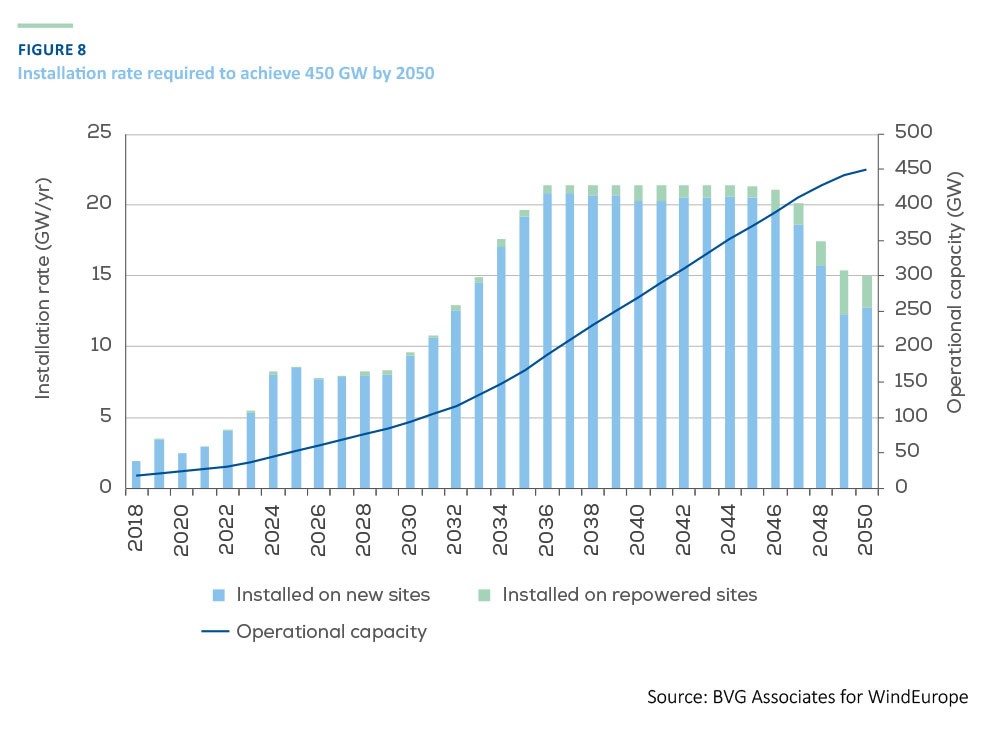Offshore wind is the holy grail
The coming decades will show a substantial growth in the number of wind farms in the North Sea. This presents opportunities for the port of Rotterdam and companies that focus on this segment.
Wind farm maintenance and construction is relatively new to the scope of nautical activities. However, it has already developed into an important cornerstone for the port of Rotterdam. In order to provide Rotterdam port’s business sector with knowledge and to support them in setting up services in areas like offshore wind, the Port of Rotterdam Authority set up the Offshore Community Rotterdam together with RPPC, which now has 80 members.
Recently, Hans Timmers, chairman of the NWEA, the branch organisation for the wind energy sector, Shared some developments with the offshore community Rotterdam
60 GIGAWATTS IN 2050
‘The wind turbines on the North Sea can now deliver one Gigawatt,’ begins Timmers. ‘60 Gigawatts should be achievable in 2050, the target for Europe being 450 Gigawatts.’

Gas country
Timmers’ report clearly shows that the Netherlands is facing a huge challenge. A recent report shows that when it comes to generating sustainable energy, the Netherlands is the worst performer of all European countries. ‘The Netherlands has been living on and from gas for decades. The huge change that needs to be made cannot be achieved with a few solar panels.’
Timmers has a few key indicators to share; ‘30% of our electricity now comes from sustainable sources, mainly generated from wind turbines. However, we must not forget that electricity accounts for only 25% of our total energy consumption. Co-firing biomass and geothermal energy brings the share sustainable energy to 8%.
Hefty fine
European targets require our country to generate 14% of energy sustainably this year. ‘We will not achieve that,’ says Timmers. ‘And that makes the Ministry of Economic Affairs very nervous, because it will result in a substantial penalty for the Netherlands at the end of the year.’ What the chairman is trying to say is that we have a huge challenge ahead of us. ‘In the Netherlands we now have 1 Gigawatt at sea, which should increase to 60 Gigawatt in 2050. Wind energy is the holy grail of sustainability in our country. Offshore wind in particular.’
Ultimately, around 20% of the Dutch section of the North Sea will be used for wind farms. ‘Environmental compensation and development are also subject to extensive attention.’ One thing is clear: the Dutch ports and nautical companies will play an important role in the construction and maintenance of the parks. ‘A wind turbine has an economic service life of 30 to 40 years. Maintenance is necessary during that period.’
The port of Rotterdam, together with the companies in the port area, is in an excellent position to take advantage of the opportunities that construction and maintenance of offshore wind farms offer. The North Sea, with a large amount of wind turbines in the near future, is literally on its doorstep.
Lobby
The danger, Timmers believes, is that Dutch companies are over-optimistic too soon. ‘The aim of our daily lobby is that the contracts go to Dutch companies, so not to any parties from China or other countries.’ In the United Kingdom, 60% of the contracts have to be carried out by local companies. ‘The Netherlands does not pursue such an industrial policy.’
That is why the NWEA focuses on exercising influence when preparing tenders. ‘By placing a strong emphasis on quality requirements, contracts are more likely to be awarded to Dutch companies.’ With regard to the quality aspect, Timmers not only refers to the material, but also to the set-up of the complete supply chain. For example, by investing in the quality of staff and the efficient organisation of the entire supply chain, companies in and around Rotterdam can unequivocally distinguish themselves, certainly if they work both together and with the knowledge institutes such as STC and the Erasmus University.
Elsewhere in Europe, major construction is also taking place at sea. Ultimately, this should increase to a capacity of 450 Gigawatt in 2050, to be generated using offshore wind farms. ‘Along with onshore wind and solar energy.’
Stable electricity price
The biggest uncertain factor in the offshore wind rollout is the possible variation in the price of electricity. ‘The wind energy sector benefits from a stable electricity price. We are, after all, talking about an investment of around 1.5 million Euros per turbine.’ A fixed price is guaranteed in the United Kingdom. If the price of electricity is low, the government contributes, while high prices incur payment. ‘This, unfortunately, is something that the Netherlands does not want,’ as Timmers well knows.
There is much talk about the role that hydrogen can play in the energy transition. ‘Hydrogen is an energy carrier,’ explains Timmers. ‘The problem is that you need quite a lot of power to generate hydrogen. That is why the mantra is first: generate lots of energy, then the demand for hydrogen to store that energy arises automatically.’
Power outlet at sea
Upon the construction of the first wind farms, former Minister Kamp (Economic Affairs) spoke of the need to install a ‘power outlet at sea’. In other words, ensuring proper integration of the offshore activities and the onshore inclusion. Rotterdam companies and regional knowledge institutes have decades of experience in the relationship between nautical entrepreneurship and the on- and offshore infrastructure. In the coming years, RPPC and the Port of Rotterdam Authority will make a strong commitment to promoting the business opportunities of offshore wind among the members and, together with partners, to share market knowledge with the Offshore Community Rotterdam.